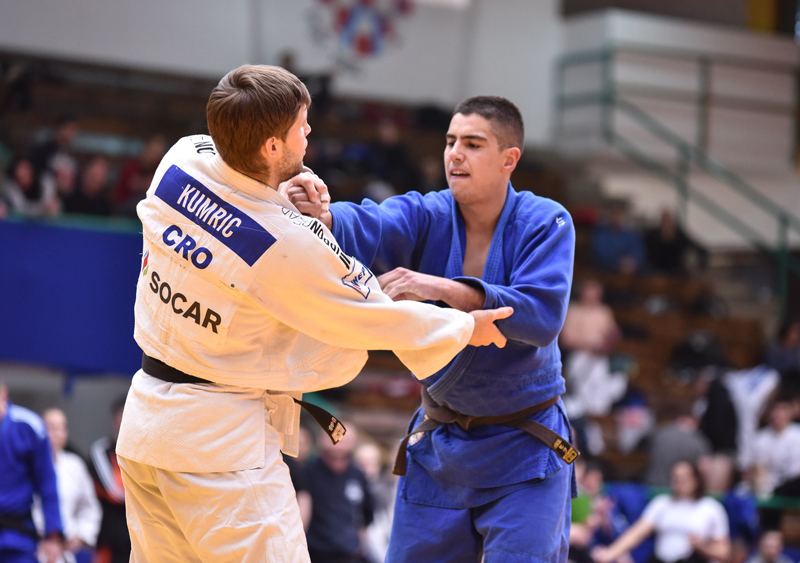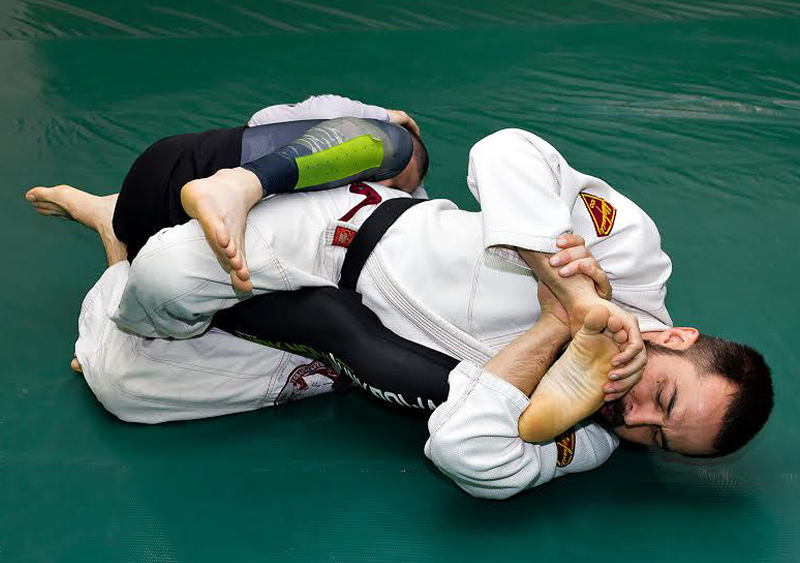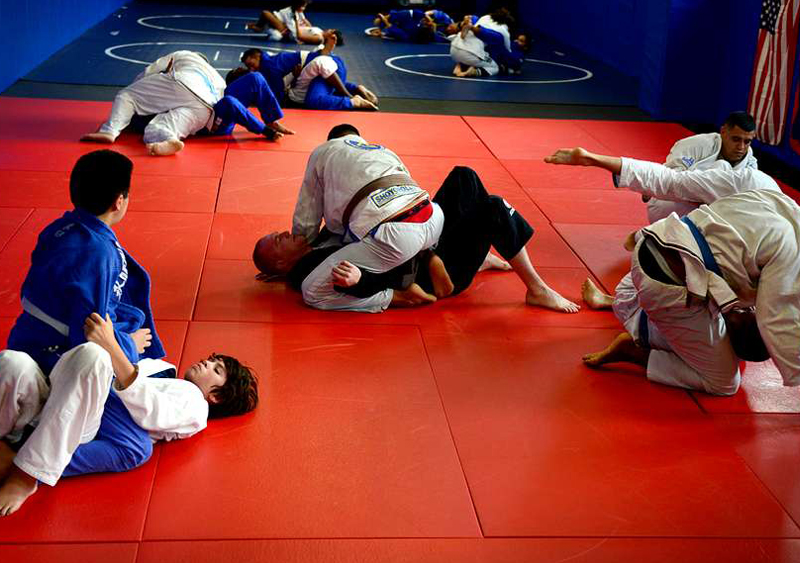Judo and Jiu Jitsu are two of the most prominent martial arts. Both originated in Japan but have since become distinct combat sports. While both emphasize grappling, their techniques and philosophies diverge significantly. Anyone interested in martial arts must know the differences between Judo vs jiu jitsu. This is key for sport, self-defense, or fitness. Both disciplines teach valuable lessons about discipline, technique, and efficient movement. They share common roots, but each brings unique strengths to martial arts.
Judo
Judo is a modern martial art and Olympic sport. It was founded by Jigoro Kano in Japan in 1882. It focuses on using an opponent’s energy against them. Its name means “the gentle way.” It stresses technique and leverage over brute strength. Kano created Judo to modernize traditional Jiu Jitsu. He removed dangerous techniques like striking. He focused on safer, effective throws and holds.
The main goal in Judo is to throw or takedown the opponent. You can also win by immobilizing them or forcing a submission with a joint lock or choke. Competitors aim to achieve a perfect throw, known as an “ippon,” which results in an instant victory. Judo includes throws (nage-waza) and ground control techniques (ne-waza). The latter include pins, joint locks, and strangles.

Judo’s Olympic debut in 1964 boosted its popularity. It is now one of the most practiced martial arts in the world. Its focus on balance, timing, and leverage makes it ideal for sport and self-defense.
Jiu Jitsu
Jiu Jitsu, especially Brazilian Jiu Jitsu (BJJ), is a global hit. It evolved from traditional Japanese Jiu Jitsu in the 20th century. BJJ is about ground fighting, submissions, and control. It is different from Judo, which focuses on throws. While Judo focuses on taking the fight to the ground, Jiu Jitsu shines once the combat is already on the ground.
In Jiu Jitsu, a smaller, weaker person can defeat a larger, stronger opponent. They do this by using technique, leverage, and proper positioning. BJJ practitioners use joint locks and chokeholds to submit opponents. They rely on skill, not brute force. This makes it ideal for self-defense as it depends on technique, not strength.

The Gracie family brought global fame to Brazilian Jiu Jitsu. They showed its power in no-holds-barred competitions, like the early UFC. Today, BJJ is popular worldwide for sport, fitness, and self-defense. Its strategy for ground control and submissions is vital to modern MMA.
Key Differences Between Judo vs Jiu Jitsu
Judo and Jiu Jitsu share a common ancestry and principles. But, they differ greatly in their techniques and uses. Here are the key differences between Judo vs Jiu Jitsu:
Focus on Techniques
- Judo: The primary focus of judo is throwing and takedowns. Practitioners seek to off-balance opponents and throw them to the ground. Once on the ground, Judo allows pins and some submissions. But, it still emphasizes throws.
- Jiu Jitsu: In contrast, Jiu Jitsu, especially Brazilian Jiu Jitsu, focuses on ground fighting and submissions. The goal is to control the opponent on the ground by dominating their position. Then, apply joint locks or chokeholds to force a submission. Jiu-Jitsu fighters often welcome going to the ground, where they can utilize their technical skills.
Competition and Rules
- Judo: In Judo competitions, matches often revolve around achieving a perfect throw (ippon. Which results in an immediate victory. Points are also awarded for lesser throws and pins. Matches have strict time limits. Ground fighting is limited, with an emphasis on standing techniques.
- Jiu Jitsu: BJJ competitions tend to have longer ground fights. Points are awarded for achieving dominant positions. Matches are often won by submission, not just points. The focus is on control, passing guard, and submissions, with fewer rules on ground fighting.
Training Styles
- Judo: Judo training focuses on sparring (randori) and practicing throws against a resisting opponent. Practitioners spend much time learning to fall safely (ukemi). They also drill throws to master timing and balance.
- Jiu Jitsu: In Jiu Jitsu training, most practice is rolling (live sparring) on the ground. Techniques are drilled repeatedly, with an emphasis on positional control, transitions, and submissions. Ground sparring allows practitioners to apply strategies in real-time against an opponent’s resistance.

Similarities Between Judo vs Jiu Jitsu
Judo and Jiu Jitsu are different. But, they share many similarities. They both stem from Japanese martial arts. Here are the key similarities between Judo vs Jiu Jitsu:
- Shared Origins: Judo and Jiu Jitsu both come from traditional Japanese Jiu Jitsu. It focused on a wide range of combat techniques, including strikes, joint locks, and throws. Jigoro Kano, the founder of Judo, refined many Jiu Jitsu techniques. This formed what is now modern Judo. Later, Brazilian Jiu Jitsu was developed with a focus on ground techniques.
- Both martial arts prioritize leverage and technique over brute strength. Practitioners are trained to use their opponent’s energy against them. It lets a smaller, weaker person use skill to beat a larger, stronger opponent.
- Gi Training: Both sports use the gi, a thick cotton uniform for grappling. The gi allows gripping techniques to control or submit an opponent. Wearing it is key to training in Judo and Jiu Jitsu.
- Focus on Grappling: Judo and Jiu Jitsu differ in technique. But, both emphasize grappling over striking. The goal is to control or neutralize an opponent. This is done through standing throws (Judo) or ground submissions (Jiu Jitsu), without using punches or kicks.
- Both Judo and Jiu Jitsu emphasize mental discipline, focus, and respect for opponents. These martial arts train the body. They also foster humility, perseverance, and self-control.
Conclusion
Judo and Jiu Jitsu are two traditional martial arts. They offer unique approaches to grappling and combat. Judo focuses on throws and standing techniques. Jiu Jitsu emphasizes ground control and submissions. Both sports require discipline, technique, and mental focus. They teach fitness, self-defense, and competition.
Both martial arts have much to offer. Judo has explosive throws and Jiu Jitsu has strategic ground fighting. Many find that training in both gives a good grasp of grappling and leverage.







